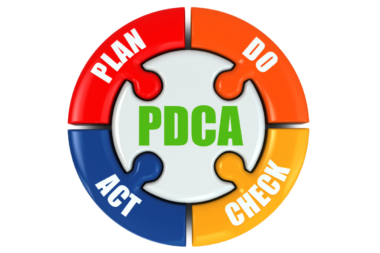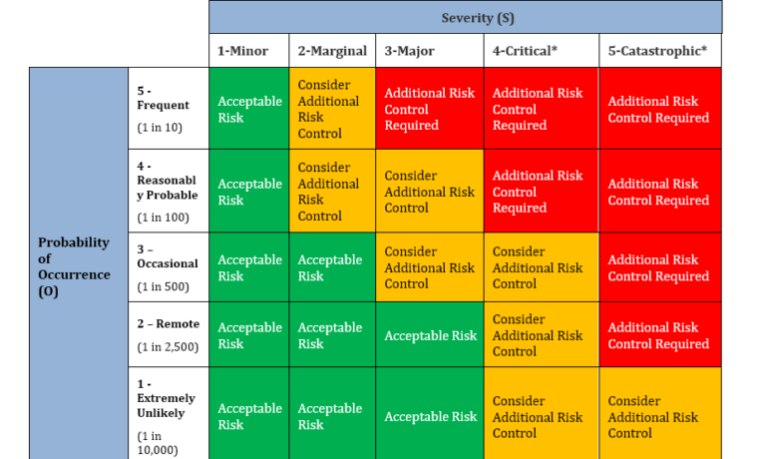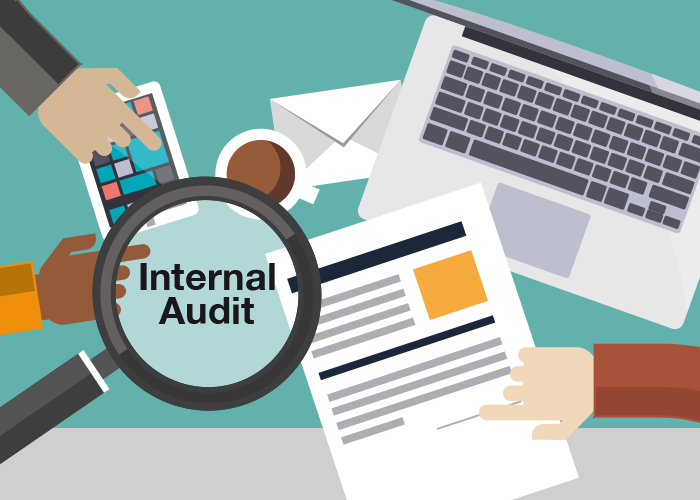Why do we need to train employees? Why do we need to keep training records for employee training program?
Managing the employee training program is one of the key requirements for ISO standards. Effective employee training program will help comply with requirements of the 21 CFR 820:
PART 820 — QUALITY SYSTEM REGULATION
Subpart B–Quality System Requirements
| Sec. 820.25 Personnel. |
| (a) General. Each manufacturer shall have sufficient personnel with the necessary education, background, training, and experience to assure that all activities required by this part are correctly performed.(b) Training. Each manufacturer shall establish procedures for identifying training needs and ensure that all personnel are trained to adequately perform their assigned responsibilities. Training shall be documented.(1) As part of their training, personnel shall be made aware of device defects which may occur from the improper performance of their specific jobs.(2) Personnel who perform verification and validation activities shall be made aware of defects and errors that may be encountered as part of their job functions. |
This document will help provide guidelines for defining employee training program for your company. This document has been based on Qualcy internal employee training program.
You can use this document and example below to create your own employee training program. You can replace Qualcy Systems Inc(QSI) with your company name to use this document.
1.0 Purpose
This document defines necessary competence of employees and provide training on specific departmental job functions for the employees at Qualcy Systems Inc(QSI) and in accordance with current Good Manufacturing Practices (cGMP).
2.0 Who is responsible for employee training?
The QA Manager or the designee is responsible for:
01. Completing and maintaining records of the Orientation and Safety training for all new employees.
02. Maintaining the original training records of QSI employees, training on specific area job functions, current Good Manufacturing Practice (cGMP), and external or off-site training certification.
The QA Manger or the designee assumes full responsibility for employee acquisition of physical job skills, and for the acceptability of each employee’s output to ensure that area employees fully understand, and are willing and able to perform specified job functions. It is the responsibility of both the employee and the supervisor to insure that appropriate supervision is provided for each task until the training for the task is completed and the employee can work independently.
The QA Manager or the designee of QSI is responsible for preparing and maintaining the training plans and training records. Employees are responsible for supplying their approved external or off-site training certification(s) to the QA Manager or the designee.
New employees may perform tasks during the training period under the supervision of a trained employee who will verify the task is completed correctly.
3.0 Steps in Employee Training
Trainer Qualification
Members of the Management team will self train on all procedures related to their routine job duties (e.g., activities that are performed daily, weekly, monthly, or quarterly). They may self train on procedures outside their routine job duties based upon a self-identified level of expertise. They are required to identify procedures where their knowledge/experience does not provide sufficient expertise to perform the task and seek additional training.
Other employees may train employees once their own training is completed. The General Manager/Quality Manager may delegate training to other employees based on their evaluation of the employees knowledge of the subject and ability to train others.
Types of Training
The type of training indicates the level of competence attained after the completion of specific type of training. For example, completion of type1 training indicates the competence level attained that enables the employee to perform certain type of task as defined below.
Type 1 training provides a basic knowledge of the SOP contents. This type of training requires no hands-on-training and the requirement for the employee is to generally understand the contents of the procedure. A person with Type 1 training may sign applicable documentation with a trained co-signer.
Type 2 training provides more extensive training including hands-on-training. The trainee can now complete the task under supervision. The intent of “under supervision” is that a trained employee is generally in the area to observe the tasks being performed. Constant attendance may not be required, depending on the task being performed. A co-signer is not required to perform tasks; however, the trainee can only sign as an operator and not a verifier.
Type 3 provides for complete training on the task and when completed, the task can be performed independently. This level of training applies to the tasks in the procedure that the employee is assigned to perform. Assignment of Type 3 requires that the employee is capable of performing those assigned tasks independently. It does not imply that the employee can perform all tasks within a procedure.
Type 4 training is defined for employees who can perform the tasks independently and can act as verifiers or trainers for other employees.
Type 0 is for special training circumstances (e.g., for “revision only” training), or for meetings where the trainings are to be documented as information sharing. The Qualcy EQMS DocFolder includes the training types with 0 to 4 scale.
When significant changes are made to the SOPs or other process documents, the CCR (content change request) author and the approvers shall evaluate the type of training required in the CCR(content change request).
When a higher level training type is conducted for any circumstances (e.g. Type 2 for a document revision change) it implies that lower level (Type 0 and Type 1 trainings) are also covered.
Documentation

There were trainings and employee qualifications completed prior to the preparation for the ISO9001 compliance, the records for these trainings will not be recreated. These trainings and qualifications will be grand fathered in to the current system. The general manager and the employees will confirm the evidence of these training records. All the current and future trainings with effect from October 01, 2017 will follow the requirements described in this procedure.
The employee’s supervisor/manager will develop an employee training plan for each employee. The employee training plan may include items from multiple training folders. A training folder is a collection of SOP (standard operating procedures) or WI (work instructions). A new training plan will be created when the job title of an existing employee is changed. The management employees will create their own training plan and self review the training plan as needed.
Due dates for the completion of training plans will be assigned for each procedure or relevant task. As these due dates are established several months in advance, changes to these dates may be required. The supervisor/manager is allowed to make the changes and is responsible to make arrangements that would prevent any adverse impact resulting from delayed completion of the trainings.
The Trainer will record on the applicable Training form any document references as well as an explanation of how the training was conducted. The records for the training will be kept using RF0008 (Training Record Form) or Qualcy EQMS electronics forms.
01. If the training assignment has been released in the Qualcy EQMS, then the employee is responsible for attaching the completed training records, if available, into the training assignment record in the Qualcy EQMS.
02. If approval requirement is set up =Yes, in the training assignment record in Qualcy EQMS, the assigned approver will be notified when the training record is submitted for review by the trainee.
03. After the review and approval by the Approver, the training record will be closed and it becomes a permanent record.
04. Employees are trained for their specific job functions by reading documented procedures, observing procedures performed and executing said procedures under supervision and independently.
Minimally, an employee must read the operating procedure and sign off that they understand the procedure and demonstrate this by successfully completing the task. The employee must complete type 3 training level to independently perform the task.
05. Initial training for a new employee or new operation uses the specific procedure(s) as a guide.
Employee Training Record

A training Record form RF-0008 or a training assignment record in Qualcy EQMS will be initiated and completed for the training of all employees in all job related procedures.
Once the training is completed, the trainer shall prepare training records for all attendees to document the training activities.
The training record RF-0008 or a training assignment record in Qualcy EQMS shall document or contain:
Names, numbers and revisions of the procedures and controlled documents applicable to training for that job task.
The type of training received. Dates and signatures of the trainer and trainee(s) indicating that he or she has understood the training received.
Attendees may request copies of training records from the Trainer and submit the copies of the training record in the Qualcy EQMS if training assignments have been opened and released for the specific training.
The training should be completed prior to the effective date of the applicable procedures. If the date of training is not within 30 days of the effective date of the document, the manager or supervisor shall make arrangements to prevent any adverse impact on the product quality. Resume: An individual’s resume documenting both education and work experience should be part of a training record.
Training Interval or Re-training
Each time a document is revised and training is required by the request or of the change request, the training shall be provided to the appropriate employees within 30 days from the effective date, unless otherwise specified in the Training Record. Some changes may require training to be provided before the change is made effective. In such cases, the change initiator shall make sure that the training has been provided to affected employees in timely manner.
All SOP’s will be reviewed for understanding prior to completion of a task if that task is not under the “normal” scope of an individual’s daily job or if it has been over a year since the task has been performed. These periodic reviews do not need to be documented.
Evaluation of Training Plan and Competency
 The competency requirements and training plans shall be defined for each employee.
The competency requirements and training plans shall be defined for each employee.
The Employee Training Plan for each employee will be reviewed in regular intervals to make sure the Training Plan is executed in timely manner.
The review of Employee Training Plan shall be done at least once in a year to evaluate the effectiveness of the employee training and competence. The evaluations will take into account the risk associated with the work done by the employee, experience and competence of the employee.
Retention of Records
Completed Employee Training Records are to be compiled and maintained by the QA Manager or designee within the appropriate employee’s file. The training records can be stored in paper copy folders or in the electronics form when the Qualcy EQMS system is used. The maintenance of employee training program records is one of the key requirement for the compliance.
You can contact us to set up a demo to see the Qualcy Training Management Software. Also you can get a word copy of this document.













